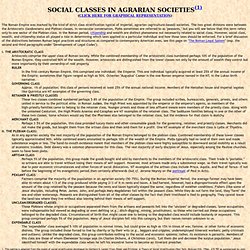

IraChernus-JamesonAndPostmodernism. To read more by Ira Chernus, click here Ira Chernus Most interpreters of postmodernism assume that there is a clearcut difference between the modern era and the postmodern era.

The modern era is the period that began (in western Europe) in the late 17th century and ended some time in the 1960s; the postmodern is the last 30 years or so. Many say that one main difference between the two eras has to do with the question of unity, wholeness, and totality. In the modern era people wanted some kind of totality: a unified conception of the world, a unified set of values, a unified culture and lifestyle, etc. According to most of the postmodern theories, postmodernism is quite different.
But most of the postmodern theorists take a different view. Some postmodern theorists especially attack a form of totality they call the "master narrative. " Postmodern theories often extend this analysis to the idea of a unified self. Jameson_Postmodernism__cultural_logic_late_capitalism.pdf. Postmodernism or, The Cultural Logic of Late Capitalism by Fredric Jameson. Fredric Jameson (1991) Postmodernism or, The Cultural Logic of Late Capitalism Source: Postmodernism, or, The Cultural Logic of Late Capitalism Verso, 1991.

Just two sections from Chapter 1 reproduced here. 1973_tools_for_convivality.pdf. IraChernus-JamesonAndPostmodernism. Political%20Ideology__Its%20structure,%20functions,%20and%20elective%20a. Turchin_AgrarianEmpires. Lenski, Agrarian Social Classes. The Roman Empire was marked by the kind of strict class stratification typical of imperial, agrarian (agriculture-based) societies.

The two great divisions were between the Aristocratic (landowners) and Plebian classes. In vernacular conversation, Plebs sometimes are referred to as "peasants," but you will see below that this term refers only to one sector of the Plebian class. In the Roman period, citizenship and wealth are distinct phenomena not necessarily related to social class. However, social class, wealth, and citizenship status all played a role in determining which laws applied to a particular individual and how those laws should be enforced. For a brief discussion of the distinctions between Roman legal practices and structures as compared to contemporary American ones, see this page on "The Roman Legal System" (esp. the second and third paragraphs under "Development of Legal Codes"). Types of Societies in Sociology: Lesson & Quiz.
Did you know that there have been six types of societies throughout our history?

Learn more about the different types of societies and the characteristics that are associated with each. Have you ever wondered what society was like before your lifetime? Maybe you wonder in what ways has society transformed in the past few centuries? Different Types of Societies and Their Major Characteristics Işın Yılmaz. To begin with, society is groups of people who live in a certain domain and behave according to existing culture and morality.

Welcome to the Dr. Nestor Rodriguez's Introduction to Sociology Webpage. Society and Culture: Types of Societies. The society we live in did not spring up overnight; human societies have evolved slowly over many millennia.

However, throughout history, technological developments have sometimes brought about dramatic change that has propelled human society into its next age. Hunting and Gathering Societies Hunting and gathering societies survive by hunting game and gathering edible plants. Until about 12,000 years ago, all societies were hunting and gathering societies. Types of Societies. Although humans have established many types of societies throughout history, sociologists and anthropologists (experts who study early and tribal cultures) usually refer to six basic types of societies, each defined by its level of technology. hunting and gathering societies The members of hunting and gathering societies primarily survive by hunting animals, fishing, and gathering plants.

Society. A human society is a group of people involved in persistent interpersonal relationships, or a large social grouping sharing the same geographical or social territory, typically subject to the same political authority and dominant cultural expectations.

Human societies are characterized by patterns of relationships (social relations) between individuals who share a distinctive culture and institutions; a given society may be described as the sum total of such relationships among its constituent members. In the social sciences, a larger society often evinces stratification or dominance patterns in subgroups.
Insofar as it is collaborative, a society can enable its members to benefit in ways that would not otherwise be possible on an individual basis; both individual and social (common) benefits can thus be distinguished, or in many cases found to overlap. Sociology: Understanding and Changing the Social World, Comprehensive Edition 1. 14.2 Types of Political Systems Learning Objectives Discuss the advantages and disadvantages of representative democracy.

Explain why authoritarian and totalitarian regimes are more unstable politically than democracies and monarchies. Various states and governments obviously exist around the world. In this context, stateThe political unit within which power and authority reside. means the political unit within which power and authority reside. List of political ideologies.
Political ideologies have two dimensions: Goals: How society should be organized.Methods: The most appropriate way to achieve this goal.

An ideology is a collection of ideas. Typically, each ideology contains certain ideas on what it considers to be the best form of government (e.g. democracy, autocracy, etc.), and the best economic system (e.g. capitalism, socialism, etc.). Introduction to Louis Althusser; Module on Ideology. Introduction to Louis Althusser, Module on ISAs. Althusser. 07Althusser,IdeologyandIdeologicalStateApparatuses.pdf. Althuss1.